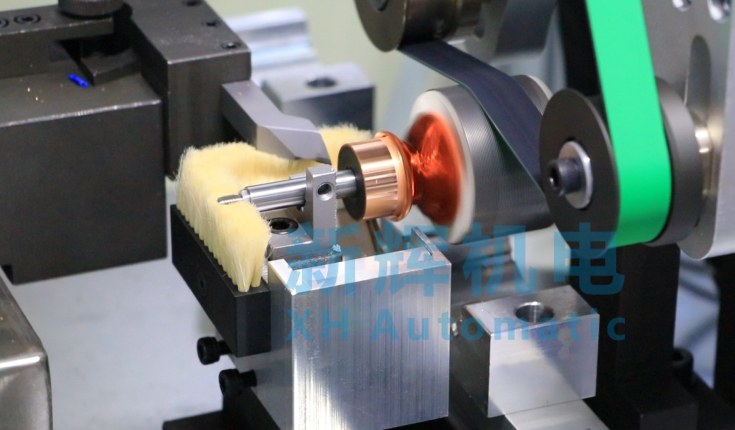What are the common sensor failures and their solutions for automatic single-station fine-turning machines for motor-motor rotors?
Automatic single-station fine-turning machine (car motor rotor commutator) common sensor failures and their solutions are as follows:
1, motor speed sensor failure:
Failure phenomenon: the sensor does not work, the signal is not stable or no signal.
Solution: Make sure the power supply of the sensor is normal, check whether the power connection, interface and voltage are in accordance with the specifications. Use an oscilloscope or multimeter to measure the output signal and check whether there is a pulse signal output. If there is no signal, the sensor may be damaged or poorly connected, need to be replaced or repaired.

2、Sensor signal output problem:
Failure phenomenon: signal loss or interference.
Solution: Check whether the connecting wire from the sensor to the controller is firm, broken or short-circuited. Replace the connection line if necessary.
3、Improper sensor position:
Failure phenomenon: unstable or inaccurate signal.
Solution: Confirm whether the installation position is correct, and the distance between the rotor or magnet in the specified range, to avoid contact with the rotor shaft.
4、Signal interference problems:
Fault phenomenon: signal waveform distortion.
Solution: Check whether there is electromagnetic interference (EMI), ensure and signal line away from high-voltage cables and other possible sources of interference.
4, rotor and magnet problems:
Failure phenomenon: inaccurate speed.
Solution: Confirm whether there is a mark on the rotor or the magnet is working properly, make sure there is no wear or fall off.
5、Servo motor temperature sensor failure:
Fault phenomenon: temperature sensor signal abnormality, disconnection, short circuit, aging, high ambient temperature, pollution or damage.
Solution: Check the temperature sensor connection line to ensure that there is no broken or short circuit; for aging sensors, need to be replaced; for high ambient temperatures, need to improve the working conditions of the sensor; for contaminated or damaged sensors, need to be cleaned or replaced.
6, Hall sensor failure:
Failure phenomenon: Once the Hall position sensor failure, the position signal it contains is then lost, which may lead to motor speed disorders, and even cause greater damage to the electric drive system.
Solution: Acquire the rotor position information fed back by the Hall sensor in real time and select the appropriate drive voltage vector to be applied to the drive bridge arm.
The above solution provides the basic treatment method for some common sensor faults that may be encountered during the operation of automatic single-station fine-turning machines, which helps to quickly diagnose and repair the problem to ensure the normal operation and productivity of the machine. ※ If you still can't solve the problem by the above ways and means, please contact the technical specialists of Xinhui Electromechanical Equipment Co., Ltd. through the page chat tool to seek help.







